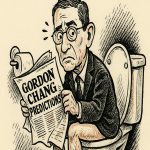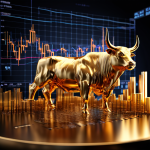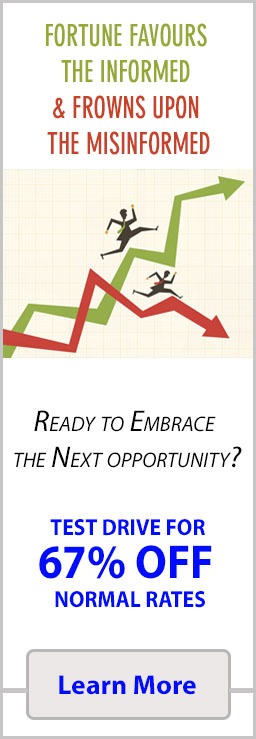Psychological Priming Effect: How Subtle Cues Trigger Big Mistakes
April 10, 2025
A red bar flashes on CNBC. Your phone buzzes with “Breaking News: Market Plummets.” No one told you to panic. But you do.
That’s the Psychological Priming Effect. It doesn’t shout; it whispers loud enough for your amygdala to hear. Before the conscious mind has time to catch up, the hands sell. The mouse clicks. The account bleeds. And somewhere, someone who stayed cold while you ran hot just got richer.
This isn’t about market timing. It’s about mental rigging. Priming is the first domino—a subtle nudge that cascades into full-blown action. And the tragedy? Most don’t even see it coming.
The Color Red Isn’t Just a Color
Studies show that red triggers avoidance behavior. In experiments, test subjects exposed to red underperformed before taking a test. Traders, too, underperform when screens bleed red. But it’s not just visuals. Headlines, social cues, and financial influencers plant triggers that echo below the threshold of reason.
Why do market participants panic more on Mondays? Why do selloffs intensify just before earnings? Because they’ve been primed. The narrative has already been planted days before.
How the Herd Gets Programmed
News cycles build tension like theater. A Fed decision is “looming.” Oil prices “threaten”. The economy is on a “knife’s edge.” Even neutral events are phrased with dread.
This language doesn’t just inform; it infects. Markets move because the crowd expects movement, and the crowd has been gently programmed to anticipate disaster.
Now add social proof. Everyone else is worried, trimming risk, so you follow. But you don’t realize that your reaction was architected days earlier.
Subtle Seeds, Massive Outcomes
Look at March 2020. By the time lockdowns began, fear had already been metastasizing for weeks. Photos of empty shelves. Graphs of infection curves. The narrative was primed. So when the real catalyst hit, selling turned to panic.
Or examine crypto. How many sold during 2022’s bottom because the macro priming was relentless? Headlines screamed recession. Twitter echoed doom. Even bulls began hedging their language. By the time strength returned, the crowd had already exited—on cue.
? Primed to Lose: How Subtle Cues Trigger Big Mistakes in Markets and Life
| Priming Cue / Setup | Typical Emotional Reaction | Resulting Mistake or Loss |
|---|---|---|
| Red flashing headlines: “MARKET COLLAPSE” | Panic, urgency | Selling at the bottom, locking in losses during temporary drawdowns |
| “Expert panel warns of recession” across media | Fear, tightening | Avoiding entry at generational lows; paralyzed when action is most profitable |
| Photos of empty store shelves | Scarcity mindset | Hoarding, overpaying, or making irrational emergency decisions |
| Social media echo chambers on “bubble” narratives | Groupthink, defensiveness | Exiting winning trades too early based on collective noise |
| Central bank “emergency meeting” headlines | Alarm, hyper-vigilance | Misreading policy pivots; buying hedges when risk is already priced in |
| Trending hashtags like #StockMarketCrash | Herd momentum | Joining mass exits; misjudging timing by chasing narratives |
| “Everyone is doing X” from influencers | FOMO (fear of missing out) | Entering at peak euphoria; abandoning logic for crowd safety |
| Biased earnings preview articles | Anchoring to negativity | Ignoring long-term fundamentals due to temporary sentiment distortion |
| Red chart visuals on trading apps | Anxiety spike | Trigger-happy exits; reinforcing loss aversion during short-term noise |
| “This changes everything” headlines post-event | Emotional exaggeration | Overreacting to black swan events; abandoning long-term strategy |
| Political ads with dystopian music | Existential fear | Voting irrationally; adopting zero-sum mentalities that hurt financial and emotional growth |
| Recession memes and parody accounts | Desensitization or false calm | Underreacting to real structural risks; misallocating capital |
| Lifestyle influencer success posts | Envy, self-doubt | Overextending financially to “keep up” with curated illusions |
| “Breaking news” dopamine cycles | Addictive distraction | Decision fatigue; reduced discipline in markets and personal life |
| Framing of downturns as “bloodbaths” | Fight or flight trigger | Shutting off critical thinking; reverting to primitive responses |
| “Hot stock tip” from social sources | Instant optimism | Blind entry into risky plays without due diligence |
| Prominent CEO “doom tweet” | Celebrity authority bias | Over-trusting elite panic; ignoring data for personalities |
| Earnings day hype and countdowns | False urgency | Gambling on unknowns; ignoring broader valuation context |
| “Once-in-a-lifetime crash” talk every year | Chronic vigilance fatigue | Missing bull markets due to overexposure to doomerism |
| Post-failure feedback like “You should’ve known” | Shame-based avoidance | Never re-entering markets or life opportunities out of fear of ridicule or regret |
Winners See the Priming, Then Bet Against It
Here’s the edge: use the crowd’s priming as a contrarian signal. If fear saturates the system, it’s likely priced in. If euphoria dominates headlines, you’re likely near a top.
Astute traders treat priming as reverse psychology. They don’t just track price. They track mood. If CNBC is red-lit and Twitter is hysterical, they wait, sharpen, and buy the trauma. They understand that priming isn’t a forecast—it’s a trap.
The Priming Effect in Life: You’re Not Choosing—You’re Being Chosen
Priming isn’t just a psychological footnote. It’s the steering wheel. You’re not walking through life freely—you’re being nudged, framed, and cued. Job titles, political beliefs, relationships, even what you eat—it’s all subtly loaded with signals designed to drive your behavior before you even think.
Watch a war movie, and you’re primed to cheer violence. Scroll Instagram, and you’re primed to feel lack. Hear a bullish headline? You’re primed to buy high. A bearish one? Sell low. It’s not just markets—it’s your entire decision matrix being puppeteered by invisible strings.
Even the weather forecast isn’t neutral. Gray skies prime you for pessimism. Sunshine primes confidence. News cycles? A drumbeat of fear, hope, fear again. None of this is accidental—it’s the architecture of influence.
And here’s the kicker: most people will never see it. They’ll keep reacting, never realizing their “free will” was co-opted five moves ago.
How to Break the Frame and Turn the Weapon on the System
The moment you see priming for what it is, you’ve got leverage. Real leverage. Because priming doesn’t have to control you—it can arm you.
Rewire the cues. Make fear your alert system, not your leash. When the herd panics, you zoom out. When euphoria surges, you sober up. That headline screaming collapse? It’s not news. It’s bait. And you’re not biting.
Winners don’t “resist” priming—they rewrite it. They use it like jiu-jitsu: redirecting the momentum of mass hysteria into calculated advantage. They know the selloff started days before the drop—with a whisper, a phrase, a story. And while the masses bleed out chasing shadows, they harvest what’s real: dislocation, mispricing, asymmetric reward.
The primed brain reacts, and the trained mind responds. When you control the frame, you control the game.













